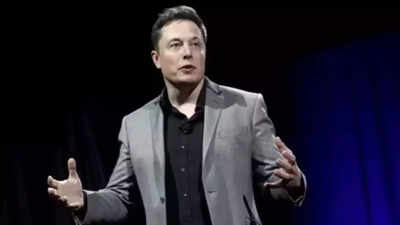Elon Musk has made an announcement: ‘Starship flight to Mars crewed by Optimus in Nov/Dec next year’ |

Elon Musk has updated SpaceX’s Mars mission timeline, reducing the likelihood of a Starship launch to the Red Planet by 2026. Once considered a feasible goal, the mission now has only a slight chance of happening by the end of that year. This marks a shift from Musk’s earlier 2025 prediction, which placed the odds at fifty-fifty. The delay is largely due to technical setbacks, including the failure to successfully land an upper-stage Starship this year. In a recent post on X, Musk acknowledged that several complex milestones must be achieved before any Mars mission can realistically proceed.
Elon Musk cites Starship failures and refuelling delays for timeline shift
Earlier this year, during a presentation to SpaceX staff following Flight 9, Musk had maintained a more optimistic view. Although Flight 9 achieved stage separation, the vehicle ultimately lost control during reentry and was destroyed. At the time, Musk said that SpaceX was targeting five uncrewed landers to Mars in 2026, contingent on mastering in-space propellant refilling, a critical manoeuvre required for deep space travel.The May plan was based on completing orbital refuelling tests in time for the 2026 launch opportunity. However, this technology remains unproven, and Musk’s latest update suggests that progress may be slower than hoped. He now appears more cautious about relying on it to meet the tight Mars launch window in late 2026.
Elon Musk now targets 2028–2030 for Starship’s Mars missions
With the updated timeline, Elon Musk now considers 2028 a more realistic target for an uncrewed Starship mission to Mars, with a crewed flight likely to follow in 2030, four years later than originally hoped. While a 2026 launch window remains technically open, Musk admits there’s only a “slight chance of Starship flight to Mars crewed by Optimus in Nov/Dec next year,” adding that “a lot needs to go right” for that to happen.This delay extends the horizon for SpaceX’s Mars ambitions, with Musk posting that the “first flight without humans is in ~3.5 years” and the “next flight in ~5.5 years with humans.” The revised plan places the manned Mars mission closer to the end of the decade, contingent on key milestones like orbital refuelling and full rocket recovery.The change in timeline also underscores the extreme technical demands of the Starship programme. Unlike earlier rockets, Starship is designed to be fully reusable and capable of carrying large payloads or multiple passengers over vast interplanetary distances. So far, SpaceX has only achieved limited success with upper-stage Starship tests, highlighting the engineering challenges that still lie ahead.
Elon Musk prioritises heat shield and rocket recovery upgrades for Starship
Alongside interplanetary ambitions, Musk has highlighted other priorities within the Starship development programme. In July, he shared that two near-term technical goals are perfecting the heat shield and recovering the rocket using the launch tower’s mechanical arms, both critical for reusability and cost reduction.Although these upgrades are not essential for the Mars missions themselves, they are vital for the long-term sustainability of the Starship platform. Improving these systems will allow SpaceX to reduce its reliance on the Falcon 9 and move closer to its goal of fully reusable, low-cost space transport. Ultimately, while Elon Musk remains committed to reaching Mars, his tone has become more cautious. The updated 2028–2030 timeline reflects a pragmatic approach, factoring in engineering hurdles and the need for breakthrough demonstrations like orbital refuelling. SpaceX’s path to Mars is still active, but it may take longer than previously envisioned.Elon Musk’s revised Mars mission timeline reflects a more grounded assessment of SpaceX’s current progress with Starship. While the goal of reaching the Red Planet remains intact, technical challenges such as orbital refuelling, heat shield durability, and rocket recovery systems have slowed momentum. Musk’s cautious tone signals a shift from earlier optimism to a more measured, step-by-step approach. With a new target of 2028 for an uncrewed flight and 2030 for a potential crewed mission, SpaceX is adjusting expectations while continuing to build critical capabilities. The journey to Mars is far from over; it’s just taking a longer, more complex route.Also Read: 235 Students reach final round of NASA-ISRO educational tour





